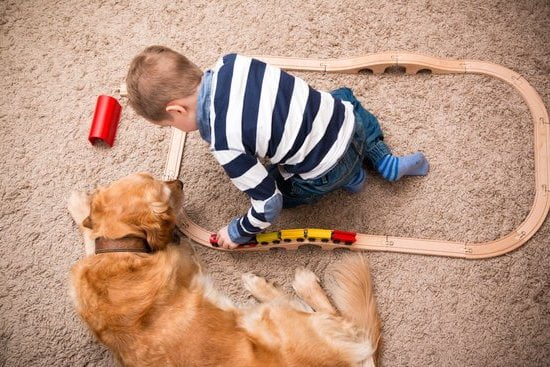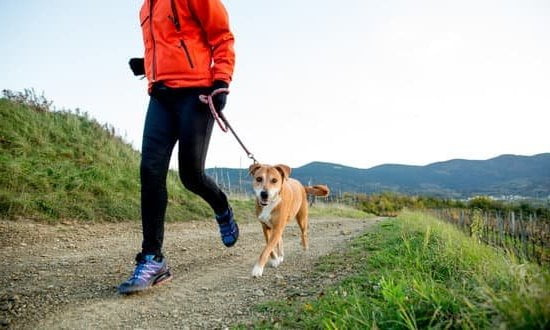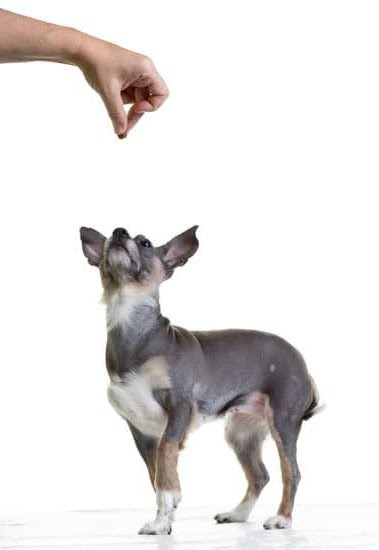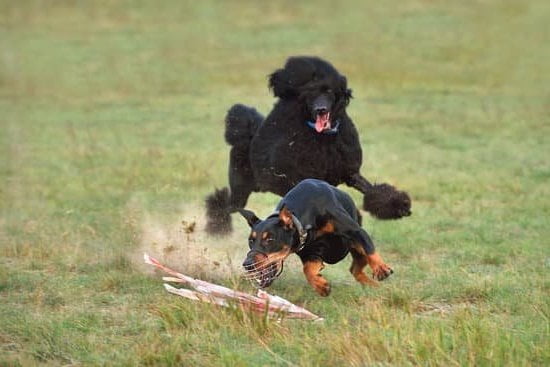Is your dog a chewer? Many dog owners have asked themselves, “how to train my dog to stop chewing things?” Chewing is a natural behavior for dogs, but when it becomes destructive, it can be frustrating and costly. In this article, we will explore the root cause of chewing behavior in dogs and effective training techniques to deter this behavior.
Understanding why dogs chew is the first step to addressing the issue. Whether it’s teething, boredom, anxiety, or simply exploring their environment, knowing the underlying reason for your dog’s chewing habit can help in finding the right solution. By identifying the root cause, dog owners can better address the problem and prevent destructive chewing incidents.
Proper chew toys and alternatives play a crucial role in preventing destructive chewing. Providing your dog with safe and appropriate items to chew on not only satisfies their natural urge to chew but also helps protect your belongings. We will discuss the importance of choosing the right chew toys and alternatives for your dog and how they can effectively deter destructive chewing behavior.
The Importance of Proper Chew Toys and Alternatives for Your Dog
Dogs have a natural instinct to chew, and providing them with the right chew toys and alternatives is crucial in preventing destructive chewing behavior. It’s important to understand that chewing is a normal behavior for dogs, but it becomes problematic when they start destroying your belongings. In this section, we will discuss the significance of proper chew toys and explore alternative options to redirect your dog’s chewing habits.
Selecting the Right Chew Toys
When choosing chew toys for your dog, it’s important to consider their size, age, and chewing strength. Look for durable chew toys that are specifically designed for heavy chewers and are made of safe materials. Hard rubber toys, nylon bones, and dental chews are great options to satisfy your dog’s natural urge to chew without causing damage to your furniture or personal items.
Alternatives to Chew Toys
In addition to providing appropriate chew toys, you can also offer alternative items that are safe for your dog to gnaw on. Frozen carrots, rawhide-free chews, and interactive puzzle toys can keep your dog entertained while promoting healthy chewing habits. Make sure to supervise your dog when introducing new items to ensure they are enjoying them safely.
By understanding the importance of proper chew toys and alternatives for your dog, you can effectively redirect their chewing behavior away from your valuables. Remember that consistency in providing these options is essential in training your dog to stop chewing things they shouldn’t be. Using positive reinforcement techniques will also help reinforce good behavior and discourage destructive chewing habits.
Effective Training Techniques to Deter Chewing Behavior
Chewing behavior in dogs can be frustrating for pet owners, but it is important to understand that it is a natural instinct for dogs. However, there are effective training techniques that can help deter this behavior and redirect your dog’s attention to more appropriate activities.
Establish Boundaries
One of the first steps to training your dog to stop chewing things is establishing clear boundaries. Ensure that your dog understands which items are off-limits and provide alternative chew toys and objects that are safe for them to gnaw on. Consistency is key when setting these boundaries, so be sure to reinforce these rules regularly.
Positive Reinforcement
Positive reinforcement is a powerful tool in training dogs. When your dog chooses to chew on their designated toys instead of household items, be sure to praise and reward them. This positive association will encourage them to continue this behavior in the future.
Supervise and Redirect
Keeping a close watch on your dog and redirecting their attention when they begin to chew on forbidden items can be an effective training technique. Use a firm “no” command and then offer them one of their approved chew toys as an alternative.
By implementing these training techniques consistently, you can effectively train your dog to stop chewing things. It may take time and patience, but with dedication and positive reinforcement, you can help your furry friend understand what is acceptable behavior in the household. Remember that seeking professional help from a dog behaviorist may also be beneficial if you are struggling with persistent chewing issues despite consistent training efforts.
Creating a Dog-Friendly Environment to Prevent Chewing Incidents
To prevent chewing incidents, creating a dog-friendly environment is essential. Here are some tips on how to make your home a safe and enjoyable place for your canine companion:
- Keep valuable or dangerous items out of reach: This includes shoes, electrical cords, and toxic plants. Store these items in cabinets or high shelves where your dog cannot access them.
- Provide plenty of appropriate chew toys: Ensure that your dog has access to a variety of safe and durable chew toys. Look for toys specifically designed for heavy chewers to keep your furry friend entertained and satisfied.
- Use baby gates or crates: Limiting your dog’s access to certain areas of the home when unsupervised can help prevent destructive chewing. Consider using baby gates to block off rooms or using a crate as a safe space for your dog when you’re not around.
By implementing these strategies, you can create an environment that reduces the likelihood of destructive chewing behavior in your dog.
Remember, prevention is key when it comes to addressing chewing issues in dogs. By proactively creating a dog-friendly space, you can significantly minimize the risk of destructive behavior and promote a harmonious coexistence with your pet. With the right environment and proper training techniques, you can set your dog up for success and reduce the urge to chew on inappropriate items.
Consistency Is Key
Training your dog to stop chewing things requires a consistent and structured approach. Dogs thrive on routine, so establishing a regular training schedule is essential in modifying their behavior. Here are some tips on how to create a solid training routine for your furry friend:
1. Set specific training times: Determine the best times of day for training sessions based on your dog’s energy levels and attention span. Aim for short, frequent sessions rather than long, infrequent ones.
2. Use consistent cues: Whether it’s a particular word or hand signal, using the same cues each time will help your dog understand what is expected of them. Consistency in your commands helps reinforce the desired behavior.
3. Keep it positive: Make training sessions enjoyable for your dog by incorporating rewards and praise for good behavior. Positive reinforcement encourages them to repeat the desired actions and makes the training process more effective.
By establishing a regular training routine, you can effectively teach your dog to stop chewing things and replace this undesirable behavior with more appropriate activities.
Remember that consistency is key in achieving lasting results, so be patient and persistent in your efforts to train your dog to stop chewing things.
Positive Reinforcement and Rewards for Good Behavior
When it comes to training your dog to stop chewing things, positive reinforcement can be an effective tool. Dogs respond well to praise and rewards, so using these techniques can help encourage good behavior and discourage chewing on inappropriate items.
One way to implement positive reinforcement is by rewarding your dog with treats or toys when they exhibit the desired behavior of not chewing on objects. It is important to offer the reward immediately after the good behavior is displayed so that your dog can make a direct association between their actions and the positive outcome.
Consistency is key when using positive reinforcement. This means that every time your dog chooses not to chew on something they shouldn’t, you should praise them and offer a reward. Over time, this consistent positive reinforcement will help to reinforce the desired behavior of not chewing on household items.
In addition to treats and toys, verbal praise and affection can also serve as forms of positive reinforcement. When your dog makes the right choice by avoiding chewing on belongings, be sure to shower them with verbal praise and physical affection. This will signal to your dog that they have done something good, further reinforcing their decision-making process.
| Positive Reinforcement Strategy | Details |
|---|---|
| Rewarding with treats or toys | Offer immediate rewards for not chewing on objects |
| Consistency | Praise and reward every time your dog exhibits the desired behavior |
| Verbal praise and affection | Use positive words and physical gestures when your dog behaves well |
Understanding the Role of Exercise and Mental Stimulation in Preventing Chewing
Dogs, like humans, need physical and mental stimulation to stay healthy and happy. Insufficient exercise and mental stimulation can often lead to destructive behaviors such as chewing. It is important for dog owners to understand the role of exercise and mental stimulation in preventing chewing incidents.
One effective way to prevent destructive chewing is by ensuring that your dog gets enough physical exercise. Regular walks, playtime, and other physical activities can help burn off your dog’s excess energy, reducing the likelihood of them resorting to chewing out of boredom or frustration. Additionally, mental stimulation through training exercises, interactive toys, and puzzle games can keep your dog’s mind engaged and prevent them from seeking out inappropriate items to chew on.
In fact, studies have shown that regular exercise and mental stimulation can significantly reduce destructive behaviors in dogs. According to a study published in the journal Applied Animal Behaviour Science, dogs who received both physical exercise and mental stimulation were less likely to engage in undesirable behaviors such as excessive chewing compared to those who did not receive adequate exercise and mental stimulation.
| Regular Exercise | Mental Stimulation |
|---|---|
| Reduces excess energy | Keeps dog’s mind engaged |
| Prevents boredom/frustration, Prevents seeking out inappropriate items, |
By incorporating regular exercise and mental stimulation into your dog’s daily routine, you can help prevent destructive chewing behavior. It is important to remember that each dog has unique needs, so it may be beneficial to consult with a professional trainer or behaviorist for personalized advice on how to train my dog to stop chewing things based on their individual requirements.
Seeking Professional Help
In some cases, despite our best efforts, our dogs’ chewing behavior may persist. If you have tried various training techniques, provided a dog-friendly environment, and ensured ample exercise and mental stimulation for your pet, yet the chewing continues to be a problem, it may be time to consider seeking professional help. A dog behaviorist or trainer can provide expert guidance and personalized solutions to address your dog’s chewing issues.
When wondering how to train your dog to stop chewing things and considering professional help, it is important to choose a reputable and experienced dog behaviorist who uses positive reinforcement techniques. They can assess the root cause of your dog’s chewing behavior, create a customized training plan, and work with you to implement it effectively. Professional guidance can give you the tools and support needed to overcome challenging chewing habits in your canine companion.
Remember that seeking professional help does not mean that you have failed as a pet owner. It simply means that you want the best for your furry friend and are willing to do what it takes to address their behavioral issues. With the right guidance and commitment from both you and the behaviorist/trainer, there is hope for training your dog to stop chewing things and creating a harmonious living environment for both you and your beloved pet.

Welcome to the blog! I am a professional dog trainer and have been working with dogs for many years. In this blog, I will be discussing various topics related to dog training, including tips, tricks, and advice. I hope you find this information helpful and informative. Thanks for reading!





